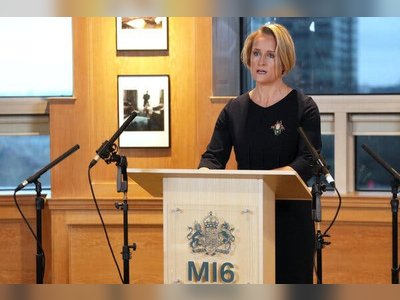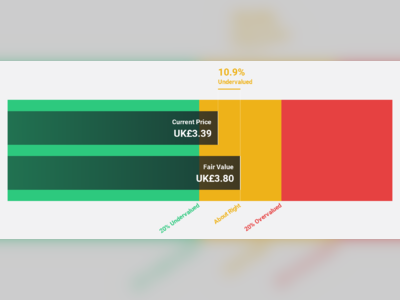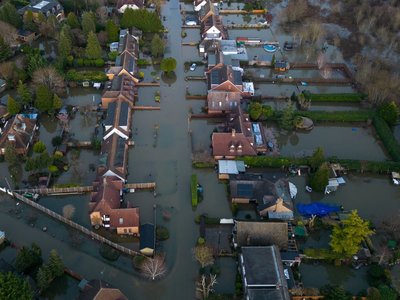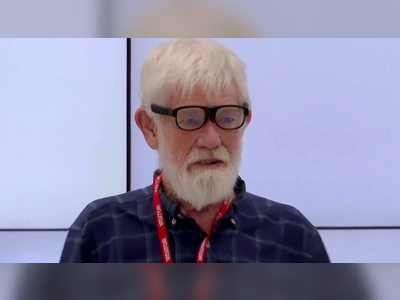Why Canada could still be social distancing in 2022, even after it flattens the curve
University of Toronto epidemiologist Dr Ashleigh Tuite says “everything” about Covid-19 worries her.
But one of her biggest fears is how Canadians are going to cope when they realise that physical distancing and other coronavirus infection controls will likely be part of their lives for much, much longer than they might expect.
How long? Such measures, repeatedly switched on and off, could be part of Canadian life until 2022 or until a vaccine is in wide use, under modelling published by Tuite and colleagues in the Canadian Medical Association Journal last week.
A strategy highlighted by the peer-reviewed research would entail on-off distancing measures being enforced for a combined 13 months out of two years.
The general prospect of waves of infection and repeated enforcement of physical distancing applied not just to Canada, Tuite said.
“Countries will be a bit different depending on what their societies look like … you can’t say, this is the specific recipe’,” said Tuite, an assistant professor at the Dalla Lana School of Public Health. “But in general, this turning up and down [of distancing enforcement] is going to be something we see universally.”
The prospect would be a daunting one for the public, Tuite agreed.
“I worry about how people are going to survive given how long this is going to take – economically, emotionally, psychologically,” she said.
Although the public around the world has been focused on the initial goal of flattening the curve, by curtailing the initial spread of Covid-19 in a way that prevents it overwhelming health systems, epidemiologists like Tuite have also been focusing on what comes after.
Most modellers agree that restraining the virus will mean repeatedly applying, loosening then reapplying distancing and other measures, for many months.
“People don’t really want to hear this. Logistically, it’s hard to wrap your head around it, a future where nothing is certain … but it’s the reality, for the coming while,” Tuite said.
The April 8 study by Tuite and co-authors Dr David Fisman and Dr Amy Greer, describing this process of “dynamic physical distancing”, is focused on Ontario. But its broad findings could be applied across Canada, said Tuite.
Modellers at Britain’s Imperial College Covid-19 Response Team have also reached much the same conclusion. They describe suppressing the disease in Britain by repeatedly turning social distancing on and off, having it in place about two-thirds of the time – say, 16 months out of two years.
That aspect of the landmark March 16 Imperial College report has drawn little attention, compared with its dire warnings that the disease, if left unrestrained, could have claimed 510,000 lives in Britain and 2.2 million in the US.
Meanwhile, modellers at Harvard University published research in Science magazine on April 9 suggesting that “prolonged or intermittent social distancing may be necessary into 2022”. Based on current critical care capacity, eight waves of distancing totalling about 17 months could be needed until July 2022 to prevent overwhelming US health care capacity, the study suggests.
The Ontario study is premised on that province’s critical-care capacity, with interventions being switched on when Covid-19-related ICU occupancy hits 40 per cent of available capacity, then switched off when it falls below 40 per cent.
Doing this “could maintain health system capacity and also allow periodic psychological and economic respite for populations”.
“Dynamic physical distancing has the potential to allow populations, and the economy, to ‘come up for air’ at intervals, which may make this strategy more sustainable,” the study says.
This on-off approach to physical distancing was potentially far more effective than a single prolonged period in preventing ICU capacity being overwhelmed and keeping infections down.
For instance, even if distancing were to be enforced for a single 12-month period, at the end of the 2-year model almost 20 per cent of Ontario’s population could still be infected. Six months of distancing could still result in an infection rate of more than 50 per cent at the end of the two-year model – almost unchanged from the base level of 56 per cent infection with only limited mitigation efforts.
But physical distancing switched on and off for a total of 13 months could slash that infection rate to 2 per cent.
“In contrast to fixed-duration physical distancing, we find that dynamic physical distancing, with interventions turned on and off as needed, based on ICU capacity crossing a given threshold, represents a more effective, and likely more palatable, control strategy,” the study said.
For the purposes of the model, physical distancing was defined as school closures, work-from-home measures and cancellation of group activities and events, to cut daily contacts by 60 per cent.
If testing capacity could be greatly increased, another approach might be a combination of less strict distancing and enhanced tracing of the disease. But to produce the same effect of reducing infections to 2 per cent of the population, such measures would have to be dynamically enforced for 16 months out of two years.
The two-year horizon for the modelling was not random, but was chosen as a reasonable time frame for a vaccine to be developed – a “huge logistical exercise” – said Tuite.
As of Thursday, Canada has had 28,884 confirmed Covid-19 infections and 1,048 deaths. Ontario has suffered 8,967 infections and 423 deaths.
Canadian health authorities are scheduled to release new modelling about Covid-19 on Friday. Although previous official modelling has shown a succession of infection humps on a vague and unnumbered graph, the likelihood of distancing measures being repeatedly applied into 2022 has not been described.
Tuite said that the overall message from her research was that, curve flattened or not, “the disease is not going away”.
“From the general public’s perspective, the initial idea seemed to be, ‘oh we do this for three weeks or a month, and then we’re done.’ But the critical piece is that the disease [is] still going to be circulating”.
She said that “flattening the curve is only the first part of the response. Once we do that we are going to be looking at a long period of time when life is not going to be normal.”














